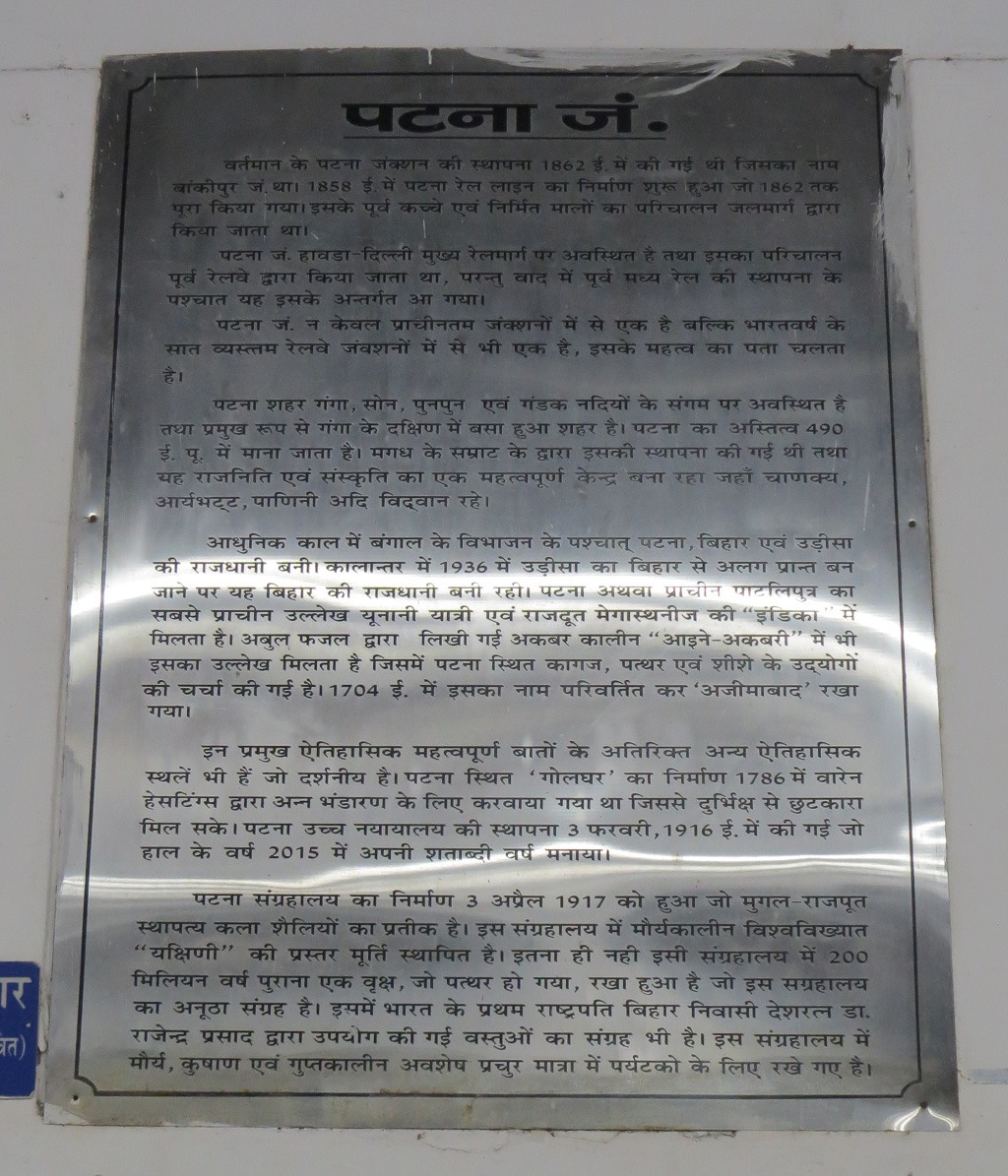Present-day Patna Junction was established in 1862 whose name was Bankipur J. The construction of the line started in 1858 and was completed by 1862. Earlier, the movement of raw and manufactured goods was done by waterways.
Patna J. is situated on the Howrah–Delhi main rail route and was operated by East Railway, but later with the establishment of East Central Railway, later it came under it.
Patna is not only one of the oldest junctions but also one of the seven busiest railway stations in India, thus, its importance is known.
The city of Patna is situated at the confluence of the Ganges, Son, Punpun, and Gandak rivers and is mainly situated to the south of the Ganges. Patna came into existence in 490 BC. It was established by the emperor of Magadha and it remained an important center of politics and culture where scholars like Chanakya, Aryabhata, Panini, etc. lived.
In modern times, after the partition of Bengal, Patna became the capital of Bihar and Orissa. Later, in 1936, when Orissa became a separate province from Bihar, it remained the capital of Bihar. The earliest mention of Patna or ancient Pataliputra is found in “Indica” of Greek traveler and ambassador Megasthenes. It is also mentioned in “Ain-i-Akbari” written by Abul Fazl, in which the paper, stone, and glass industries located in Patna were discussed. Its name was changed to ‘Azimabad’ in 1704 AD.
Apart from these major historical important things, there are other historical places also which are worth visiting. Golghar located in Patna was built in 1786 by Warren Hastings for storing food grains so as to get rid of famine. Patna High Court was established on February 3, 1916, and celebrated its centenary year in the recent year 2015.
The Patna Museum was built on 3 April 1917, which is a symbol of the Mughal-Rajput architectural styles. In this museum, the stone statue of the world-famous “Yakshini” of the Mauryan period is installed. Not only this, a 200/- million-year-old tree, which has turned into stone, is kept in this museum, which is a unique collection of this museum. It also has a collection of articles used by Dr. Rajendra Prasad, the first President of India, and a resident of Bihar. In this museum, the remains of the Maurya, Kushan, and Gupta periods are kept in abundance for tourists.
